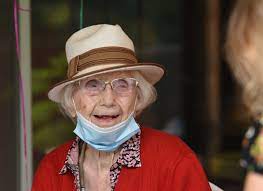Extracted from Forbes
Pauline, a local resident in Marin County, CA just turned 114. The local senior center she attends is celebrating her birthday along with many others. She is easily the oldest person in my county and one of the oldest in the entire U.S. She’s alert, active, healthy and happy. Is it some magical run of good luck? Or is she an example of how to age in a healthy and purposeful way?
Aging has been studied for countless years by thousands of scientists, medical researchers, sociologists, universities, and others to find out the “secrets” of aging well and living long. Multi-million dollar grants are given to top researchers in the field. Big Pharma is always developing medications intended to slow aging, or reverse dementia but they don’t. We still get old. 6.5 million people in the U.S. are estimated to have Alzheimer’s disease. That statistic omits the many who have not been diagnosed or who do not seek a doctor’s input with memory loss and loss of cognitive ability to manage independently.
How is it that some people navigate longevity so well while others suffer many age-related chronic illnesses and struggle along through the last years of life? One helpful book on this subject is The Blue Zones (2008) by Dan Buettner. He undertook an interesting journey to visit people in four places in the world with the most long-lived folks in them and to explore what they did that would account for their exceptional, healthy lives. I read it with fascination, as the differences in people of the same chronological age who are so dissimilar in how they age has always been of interest to me.
Dan Buettner had face-to-face interviews with many centenarians who were doing quite well. There was much common ground among the four zones he visited with the longest-lived people. The book is worth reading. I am not summarizing it here. Rather, I am sharing my most important takeaways from it.
The first is that the things most of us know about maintaining good health are true for the longest-lived too: what they eat, how they exercise and what they avoid. All the elders studied ate healthy diets free of pesticides, animal fats and artificial additives. They would be called “heart healthy” diets here. Another factor in common was the active lifestyles all of them led. They worked in their homes, with families, in the fields, within their communities, and all engaged in some form of daily very regular movement. It was either built in to the way they lived (a shepherd, for example, walking and climbing daily) or it was some form of necessary regular activity in one’s day plus a regular exercise program they did to maintain health. None led a sedentary lifestyle. They did not spend hours sitting around, watching TV or being on a screen, as too many of our own elders do in the U.S.


